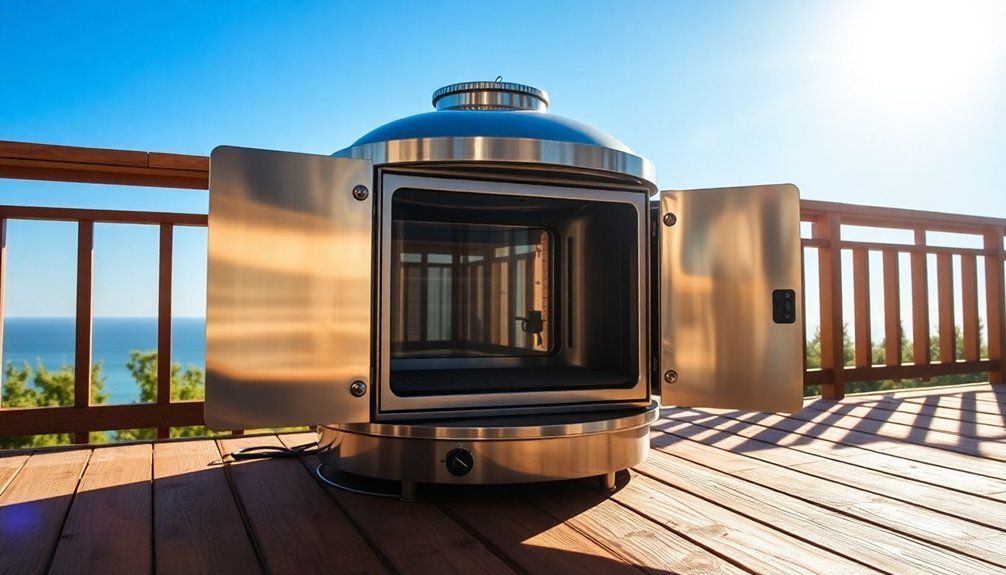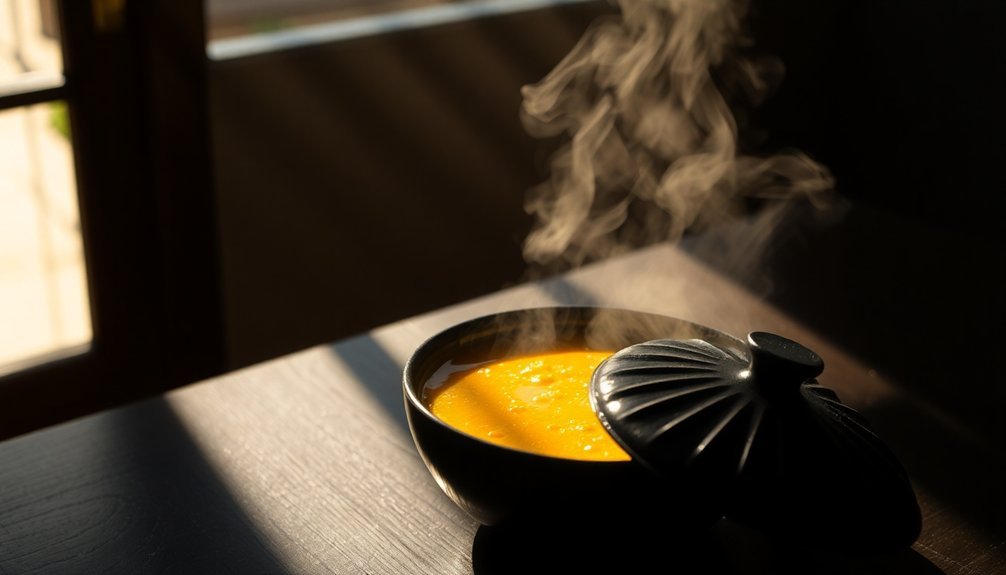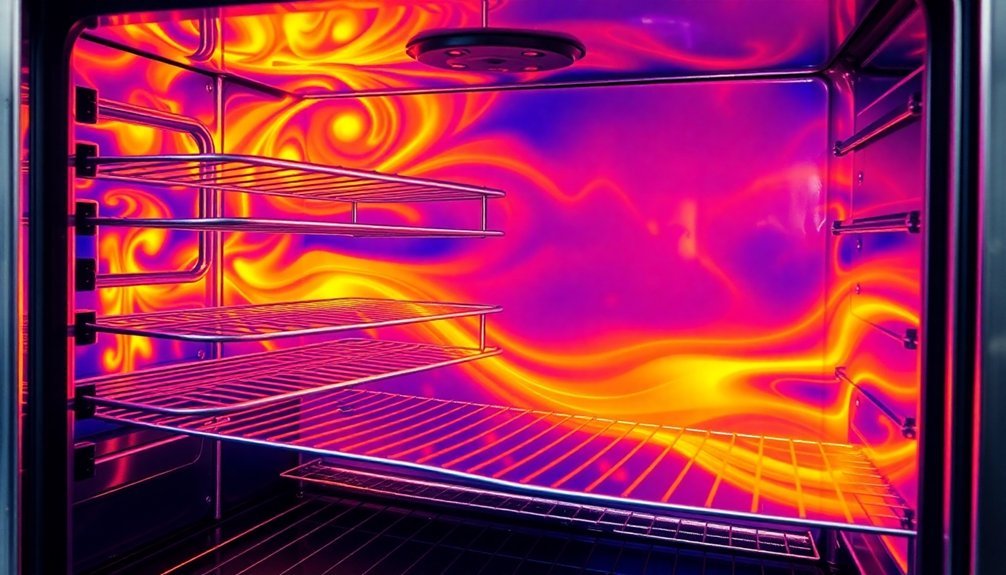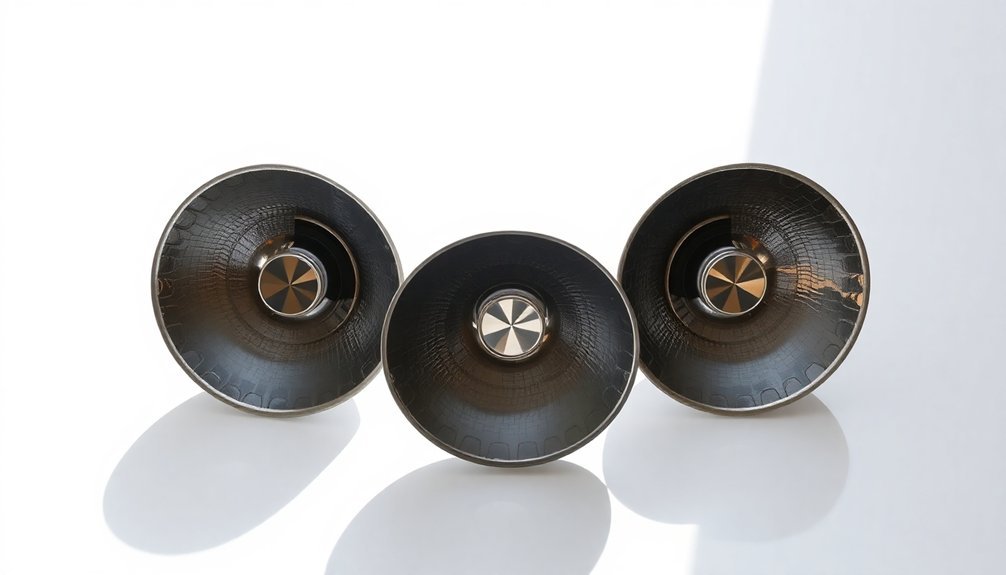The best times to preheat your sun oven are early morning (around sunrise), mid-morning between 9:00-10:00 AM, just before the peak window of 11:00 AM-3:00 PM, immediately after rain when skies clear, and during weekend batch cooking sessions. You'll need 25-30 minutes for initial preheating to reach 300°F, with temperatures potentially climbing to 400°F in ideal conditions. For best results, position your oven facing the sun, remove protective film from reflectors, and realign every 30 minutes. Proper timing and positioning can transform your solar cooking from basic to gourmet-level efficiency.
Early Morning Sunlight Setup
While the sun is still low on the horizon, setting up your Sun Oven early in the morning gives you a head start on the day's solar cooking.
Position your oven facing the sun with the glass door closed and reflectors open to maximize sunlight capture. Remove protective film from reflectors before first-time use. You'll need about 25-30 minutes for initial preheating.
On a clear morning, your oven can reach 300° Fahrenheit within 20 minutes, potentially climbing to 400° under ideal conditions.
To maintain these temperatures, you'll need to realign the oven every 30 minutes. Use the bracket or indicator hole to guarantee proper sun alignment.
Don't forget to use dark pans for better heat absorption and consider using transparent bags or glass lids to trap heat.
Keep oven mitts handy, as the unit gets extremely hot during operation.
Mid-Morning Peak Temperature Window
As the sun climbs higher in the sky, solar cooking enters its prime window between 11:00 AM and 3:00 PM, when your Sun Oven can reach maximum temperatures of 300-400°F. To maintain peak efficiency, you'll need to reposition your oven every 30 minutes, tracking the sun's movement across the sky. Properly insulated ovens can reach up to 350°F even during cold winter months.
| Time Window | What You Can Do |
|---|---|
| 11:00 AM | Initial positioning and preheating |
| 11:30 AM | Begin high-temperature cooking |
| 12:00 PM | Peak cooking performance |
| 2:00 PM | Maintain steady temperatures |
| 3:00 PM | Final cooking window |
For best results, use dark-colored cookware and guarantee proper insulation. You'll achieve ideal cooking temperatures when the sky is clear and wind is minimal. Remember to minimize opening the oven door to retain heat and maintain consistent cooking temperatures throughout this peak period.
Before Lunch Meal Prep

To guarantee your lunch is ready on time, begin preheating your Sun Oven between 9:00-10:00 AM, depending on your meal's cooking requirements.
While you're preparing your ingredients, your Sun Oven will reach ideal temperatures within 20-30 minutes, hitting up to 300°F in strong sunlight. During winter months, you may need to make more frequent adjustments to maintain optimal heating.
- Use dark pans to maximize heat absorption and maintain consistent cooking temperatures
- Check the alignment indicator frequently, adjusting the oven's position every 30 minutes
- Keep your food prep materials ready while the oven preheats to streamline the cooking process
- Monitor internal temperatures with a food thermometer for food safety
Remember to adapt your cooking schedule based on sun intensity and recipe requirements.
You'll want to take advantage of peak sunlight hours between 10 AM and 2 PM for the most efficient cooking results.
Post-Rain Clear Skies
Once storm clouds clear away, your Sun Oven can perform at its peak efficiency due to exceptionally clean atmospheric conditions. The rain washes away dust, pollen, and pollutants that typically scatter sunlight, creating favorable conditions for solar cooking.
You'll find that post-rain skies offer enhanced solar radiation and UV intensity, which means your oven will heat up faster and
Weekend Batch Cooking Days

Weekend batch cooking in your Sun Oven requires strategic planning to maximize daylight hours and cooking efficiency.
Start by prepping your ingredients the night before, and get your oven positioned early in the morning when the sun's rays are strongest. You'll want to preheat for 10-15 minutes to reach ideal temperatures between 300-400°F.
- Use stackable pots to cook multiple dishes simultaneously, like dal and bhat.
- Realign your oven with the sun throughout the day to maintain consistent heat.
- Select recipes that work well for slow cooking and can be easily scaled.
- Coordinate cooking times so all dishes finish around the same time.
Keep monitoring the temperature and make seasonal adjustments as needed, especially during winter months when you'll need longer preheating times due to weaker sunlight.
Frequently Asked Questions
Can I Preheat the Sun Oven in Winter Months Effectively?
Yes, you'll preheat effectively in winter when you have clear, sunny days. Just align your oven between 10 AM and 2 PM, adjust the leg fully, and track the sun every 30 minutes.
Does High Altitude Affect the Sun Oven's Preheating Time?
Yes, high altitude actually improves your sun oven's preheating time. You'll experience faster heating due to more intense solar radiation, less atmospheric interference, and clearer skies that allow direct sunlight to reach your oven.
How Long Should I Preheat When Cooking Frozen Foods?
You'll need to preheat your Sun Oven for at least 20 minutes before cooking frozen foods. For larger frozen items like chicken, start early in the morning to allow 8 hours of cooking time.
Will Reflector Panels Need Cleaning Before Each Preheating Session?
You don't need to clean reflectors before every preheat unless they're visibly dirty or dusty. However, it's good practice to quickly wipe them with a damp cloth after each use to maintain efficiency.
Can Humidity Levels Impact the Sun Oven's Preheating Performance?
Yes, high humidity can slow down your sun oven's preheating by reducing solar energy absorption. You'll notice longer preheating times when it's humid, as moisture can block sunlight and decrease the oven's heating efficiency.
In Summary
You'll get the most from your sun oven by strategically timing when you preheat it. Whether you're catching those first morning rays or taking advantage of post-rain clarity, proper timing makes all the difference. Remember to check your local weather forecast and position your oven accordingly. With these five ideal preheating windows, you're set to harness solar energy effectively for all your eco-friendly cooking needs.





Leave a Reply